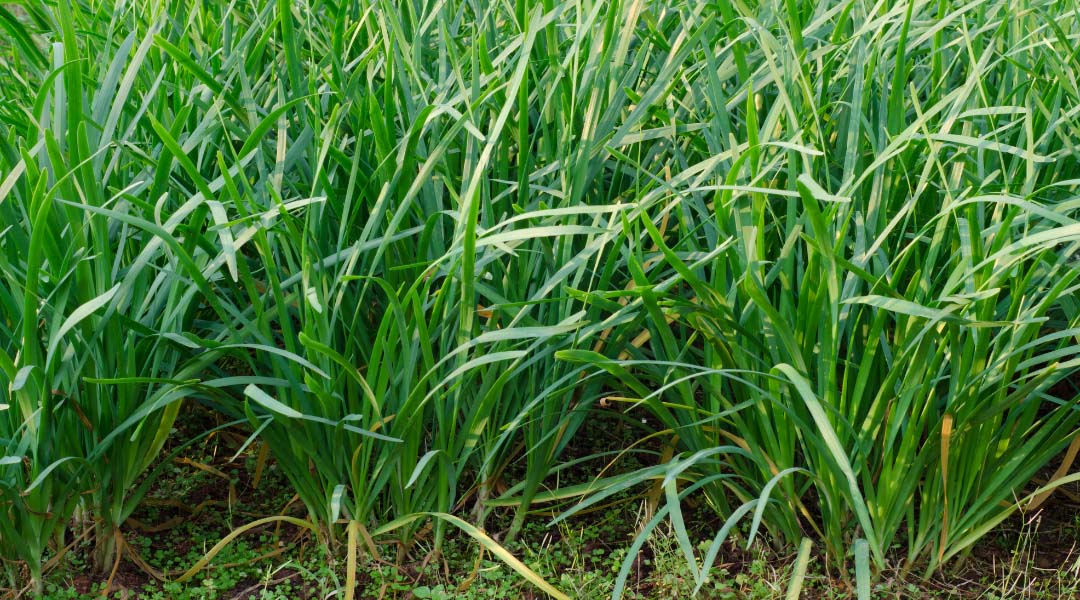Chives are a delightful and versatile herb that belong to the onion family, Allium. Known for their mild onion flavor and vibrant green stalks, chives are a staple in many kitchens worldwide. Whether you’re a seasoned gardener or just starting, growing chives is an easy and rewarding endeavor. Not only do they add a burst of flavor to your dishes, but they also bring a splash of color to your garden with their delicate, purple-pink flowers.
Benefits of Growing Chives
One of the greatest benefits of growing chives is their simplicity. They require minimal care, are resistant to most pests, and can thrive in a variety of environments. Additionally, having fresh chives at your fingertips elevates your culinary creations, from soups to salads to garnishes. Nutritionally, chives are packed with vitamins A and C, calcium, and iron, making them a healthy addition to your diet. Furthermore, their natural insect-repelling properties make them a beneficial plant for any garden.
Common Chives (Allium schoenoprasum)
Common chives are the most widely recognized variety. They have thin, hollow green leaves and a mild onion-like flavor. These chives produce edible purple flowers that can be used as a garnish, adding both flavor and a pop of color to your dishes.
Garlic Chives (Allium tuberosum)
Garlic chives, also known as Chinese chives, differ from common chives in that they have broader, flatter leaves and a mild garlic flavor. They also produce white, star-shaped flowers that are not only beautiful but also edible. Garlic chives are a great alternative for those who prefer a subtle garlic taste in their cooking.
Other Varieties
While common and garlic chives are the most popular, there are other varieties like the Siberian chive, which is known for its hardiness in colder climates. Each variety has its unique flavor profile and growth habit, making chives a versatile addition to any herb garden.
Ideal Growing Conditions
Climate Requirements
Chives are incredibly adaptable, thriving in cool to mild climates. They can tolerate light frost, making them one of the first herbs to sprout in spring and the last to die back in fall. In warmer climates, chives appreciate a little afternoon shade, but in cooler regions, they prefer full sun.
Soil Requirements
Chives are not particularly fussy about soil, but they do best in well-drained soil with a pH between 6.0 and 7.0. Adding compost or organic matter to your soil before planting will provide the nutrients chives need to grow vigorously. If your soil is heavy or clay-like, consider growing chives in raised beds or containers to ensure proper drainage.
Sunlight Requirements
Chives need at least 6 hours of sunlight per day to thrive. In hotter climates, they can benefit from partial shade, especially during the peak afternoon hours. However, the more sunlight they receive, the more robust their growth will be.
Planting Chives
From Seeds
Starting chives from seeds is straightforward. Sow the seeds about 1/4 inch deep in the soil, either directly in the garden or in seed trays indoors. Keep the soil moist, and you should see germination within 10-14 days. Once the seedlings are a few inches tall, thin them out to allow about 6-12 inches between plants to ensure they have enough space to grow.
From Transplants or Divisions
For a quicker start, you can plant chive transplants or divide an established clump of chives. Simply dig up a mature chive plant, divide the clump into smaller sections, and replant them in your garden or containers. Space them about 6-12 inches apart, and water them well after planting.
Container Planting
Chives are well-suited for container gardening. Choose a pot that is at least 6-8 inches deep with good drainage. Fill the container with a well-draining potting mix, and plant your chives as you would in the garden. Containers allow you to move your chives around to catch the best sunlight or protect them from harsh weather.
Caring for Chives
Watering
Chives prefer consistent moisture, so water them regularly, especially during dry spells. The soil should be kept moist but not waterlogged, as overly wet soil can lead to root rot. In containers, check the soil more frequently, as pots tend to dry out faster than garden beds.
Fertilization
Chives are light feeders, so they don’t require heavy fertilization. However, to keep them productive, apply a balanced fertilizer every 4-6 weeks during the growing season. Organic options like compost or fish emulsion work well and improve soil health over time.
Pruning and Harvesting
Regular pruning is essential to encourage continuous growth. Harvest chives by snipping the leaves close to the base, leaving about 2 inches above the soil. This method stimulates new growth. Avoid cutting more than one-third of the plant at a time to ensure the chives continue to thrive.
Pest and Disease Management
Chives are relatively pest-resistant, but they can occasionally attract aphids or thrips. These can be managed with insecticidal soap or by spraying the plants with a strong stream of water. Chives can also suffer from fungal diseases like rust or downy mildew, particularly in humid conditions. Ensure good air circulation around your plants and avoid overhead watering to reduce the risk of disease.
Overwintering
Chives are hardy perennials that can survive winter in most climates. In colder regions, you can mulch around the base of the plants to protect the roots from freezing. Alternatively, dig up a clump of chives and bring it indoors to continue harvesting fresh leaves through the winter months.
Companion Planting and Uses in the Garden
Companion Planting
Chives are excellent companions for many garden plants. They help deter pests like aphids, Japanese beetles, and carrot flies, making them a natural pest control option. Plant chives near carrots, tomatoes, and roses to protect these plants from common pests. Their flowers also attract beneficial insects, such as bees, which help pollinate your garden.
Chives in Landscaping
Beyond their practical uses, chives are also attractive additions to your garden. Their purple or white flowers add a pop of color to herb gardens and can be used as border plants. The flowers are also edible, providing a unique garnish for salads and other dishes.
Harvesting and Storage
Harvesting Techniques
Chives can be harvested as soon as the leaves are large enough to use. The best time to harvest is in the morning, after the dew has dried but before the heat of the day. Use sharp scissors to cut the leaves, which will prevent damage to the plant. Regular harvesting encourages new growth and keeps the plant healthy.
Storage
Fresh chives can be stored in the refrigerator for up to a week. Wrap them in a damp paper towel and place them in a plastic bag or container. For longer storage, chives can be dried or frozen. To dry chives, hang them in a warm, dry place until the leaves are crisp, then store them in an airtight container. Freezing chives involves chopping the leaves and placing them in a freezer bag. Frozen chives retain their flavor better than dried ones and are easy to use in cooking.
Culinary Uses of Chives
Fresh Uses
Chives are a versatile herb that can be used fresh in a variety of dishes. Their mild onion flavor makes them perfect for garnishing soups, salads, and baked potatoes. They can also be mixed into butter or cream cheese for a flavorful spread or used to add a fresh touch to omelets and scrambled eggs.
Preserved Uses
Dried or frozen chives are a convenient way to add flavor to your cooking year-round. While they lose some of their vibrant color and fresh taste when preserved, they still work well in recipes where the chives are cooked, such as stews, casseroles, or sauces.
Recipes
Here are a couple of simple recipes to showcase chives:
Chive Butter: Mix softened butter with chopped fresh chives, a pinch of salt, and a squeeze of lemon juice. Refrigerate until firm and use as a flavorful spread for bread or a topping for grilled meats.
Chive and Cream Cheese Dip: Combine cream cheese with sour cream, minced garlic, and chopped chives. Season with salt and pepper, and serve with crackers or fresh vegetables.
Common Issues and Troubleshooting
Slow Growth or Poor Yield
If your chives are growing slowly or yielding poorly, the issue may be related to soil fertility or watering practices. Ensure the soil is well-drained and rich in organic matter. Overwatering or underwatering can also stress the plants, so aim for consistent moisture.
Pests and Diseases
While chives are generally resistant to pests, they can occasionally suffer from infestations of aphids or thrips. These can be treated with organic insecticides or by introducing beneficial insects like ladybugs. For fungal diseases, improve air circulation and avoid overhead watering.
Poor Flavor or Tough Leaves
If your chives have a poor flavor or the leaves become tough, it may be due to harvesting them too late in the season or after they have flowered. Regular harvesting keeps the leaves tender and flavorful. Also, make sure the plants are receiving enough sunlight, as this can affect their taste.
Conclusion
Recap of Key Points
Growing chives is a simple and rewarding experience that offers both culinary and aesthetic benefits. Whether you’re growing them in your garden or a container, chives are easy to care for and provide a steady supply of fresh herbs throughout the growing season.
Encouragement to Start Growing Chives
If you’re new to gardening or simply looking to add some fresh flavor to your cooking, chives are an excellent choice. Their ease of care, pest resistance, and versatility make them a must-have in any herb garden. Start growing chives today, and enjoy the satisfaction of harvesting your own fresh, flavorful herbs.
This comprehensive guide provides everything you need to know about growing chives, ensuring a successful and enjoyable gardening experience. Whether you’re planting from seeds or transplants, in the ground or a container, chives are a delightful addition to any garden.


0 Comments